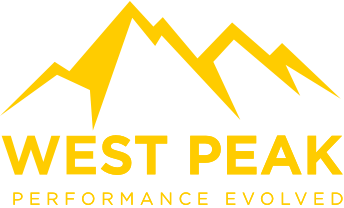Trust in Leadership: The Key to Engaged and Loyal Teams
Trust is the foundation of effective leadership. Without it, even the most strategic plans and innovative ideas can fall flat. But why is trust so vital? Trust fosters open communication, encourages collaboration, and enhances team loyalty. When team members trust their leaders, they’re more willing to take risks, share ideas, and work towards a common goal. In today’s dynamic work environment, leaders who prioritise trust create workplaces that are resilient, adaptable, and engaged. So, how can leaders build and sustain this trust?
How Can Transparency Lay the Foundation for Trust?
Transparency is the bedrock of trust in leadership. When leaders are transparent about their intentions, goals, and even mistakes, they set a standard for openness and honesty. But what does transparency look like in action?
- Share the “Why” Behind Decisions: Explaining why decisions are made (even tough ones) shows employees the broader picture. A recent survey by Forbes revealed that leaders who communicate the reasoning behind decisions gain significantly more trust from their teams.
- Admit When You’re Wrong: Humility goes a long way. Admitting when you’ve made a mistake not only shows accountability but humanises you as a leader. This vulnerability fosters a culture where team members feel safe owning their own mistakes, too.
- Keep Promises: Whether it’s about delivering feedback or implementing new strategies, following through on commitments is essential. Consistency is key to building lasting trust.
Why Is Listening the Secret Ingredient in Building Trust?
Trust is a two-way street. Leaders who actively listen to their teams build trust by showing respect for employees’ insights and opinions.
- Engage in Active Listening: Instead of jumping to responses, focus on understanding team members’ perspectives. Practising active listening helps to uncover underlying concerns and boosts morale. Our blog on Effective Leadership Communication delves into actionable tips for refining listening skills.
- Ask for Feedback: Encouraging team feedback shows that you value their input. According to Harvard Business Review, leaders who regularly seek feedback are perceived as more trustworthy and approachable, creating a culture where continuous improvement becomes the norm.
- Show Empathy: Genuine empathy connects leaders to their teams. Empathy allows you to address individual concerns and work toward solutions, whether it’s through a private discussion or team-wide adjustments.

How Does Consistency Solidify Trust Over Time?
Consistency breeds familiarity and reliability, both essential for trust. It’s not enough to be transparent or empathetic on a one-off basis. To be truly trustworthy, leaders need to be consistent in words, actions, and decisions.
- Establish Clear Expectations: Consistently setting and upholding expectations makes team members feel safe and respected. Unpredictability can breed anxiety, but consistency assures teams that they can rely on you, especially during challenging times.
- Model Accountability: Just as leaders expect accountability from their teams, they must also hold themselves accountable. When leaders take responsibility for outcomes, they reinforce a culture of integrity, trust, and shared accountability.
- Stay True to Values: Sticking to core values, even when faced with tough choices, reinforces trust. When leaders let go of personal gain to uphold team values, they earn loyalty and respect in return. As Simon Sinek notes, people trust leaders who act consistently with their values.
What Role Does Communication Play in Trust-Building?
Clear, honest communication is crucial to nurturing trust. When teams know what to expect and feel informed, they are more likely to be engaged and committed.
- Regular Check-ins: Maintain consistent communication rhythms with your team, especially in remote work settings. Regular check-ins keep team members aligned, connected, and in the loop. Our insights on Effective Remote Team Leadership cover communication strategies for remote teams.
- Address Issues Head-On: Ignoring issues only leads to distrust. Instead, deal with them promptly and openly. Whether it’s a missed deadline or a team conflict, addressing problems shows that you value fairness and accountability.
- Encourage Open Dialogue: Creating a safe space for open dialogue means everyone can speak up without fear. An open-door policy reinforces the idea that leaders are approachable and willing to support the team.

Why Is Trust In Leadership So Essential for Innovation?
When trust is present, creativity and innovation flourish. Teams that feel safe are more inclined to think outside the box and take calculated risks, which can lead to breakthroughs in projects, processes, and team dynamics.
- Foster a Safe Environment for Experimentation: When leaders encourage experimentation, even with the possibility of failure, they demonstrate that innovation is valued. Google famously adopts this approach by providing a “psychologically safe” space for ideas and allowing employees to try new approaches without fear of repercussions.
- Recognise and Celebrate Efforts: Recognising employees’ efforts, even when results aren’t perfect, builds trust and encourages future innovation. This approach helps reinforce that leaders value learning and progress over perfection.
- Promote a Collaborative Culture: When team members trust one another and their leaders, they are more likely to work together effectively, share ideas openly, and create solutions that drive results. Teams thrive when they collaborate freely without fear of judgement.
How Can Leaders Maintain Trust During Times of Change?
In a fast-paced business environment, change is inevitable. Yet, change can also be a source of anxiety. To keep trust intact during transitions, leaders must take proactive steps.
- Be Transparent About Changes: Leaders who communicate early and often about changes help ease the uncertainty for their teams. Providing as much information as possible reduces anxiety and builds confidence.
- Acknowledge Fears and Concerns: Change can be unsettling, so acknowledging employees’ concerns shows empathy and validation. By recognising these emotions, leaders can better support their teams through transitions.
Lead with Vision: During times of change, a clear vision of the future fosters hope and confidence. Leaders who outline how change aligns with the company’s mission and values provide teams with a sense of purpose and stability, even during challenging times.
Can Trust Be Rebuilt Once Broken?
Sometimes, trust can be compromised, whether through a misunderstanding, a failed promise, or a lapse in judgement. However, leaders who are committed to rebuilding trust can do so with intentional steps.
- Acknowledge the Breach: If trust has been broken, address the issue openly. Acknowledging mistakes is the first step in the rebuilding process, and it shows a genuine commitment to making amends.
- Take Responsibility: Owning up to the mistake, rather than shifting blame, is essential for re-establishing trust. It shows humility and a willingness to grow from the experience.
- Demonstrate Positive Change Over Time: Actions speak louder than words. Following through with consistent, positive behaviour helps to repair trust gradually. Rebuilding trust is a process, and teams appreciate leaders who show genuine effort over time.

Why Trust is the Ultimate Leadership Asset
Trust is not just a “nice-to-have”; it’s the cornerstone of leadership that drives engagement, innovation, and team loyalty. As the business landscape evolves, the most successful leaders will be those who have cultivated and maintained trust within their teams. At West Peak, we understand that building trust takes commitment, consistency, and time. By prioritising transparency, empathy, and open communication, leaders can create a culture where trust thrives, setting the foundation for lasting success.
Subscribe to our Podcast
Hosted by our very own Ben Stocken and Benjamin Wade our ‘How They Lead’ podcast aims to evolve the way people perform in leadership roles by showcasing a variety of high performance interviews with people from Patrick Kershaw from The RAF Red Arrows to CEO’s like Steve Phillips who help large brands like Pepsi, Mars and Unilever.
Get one step ahead – Click below to subscribe.










